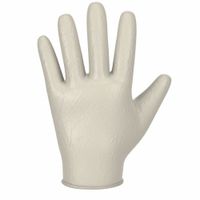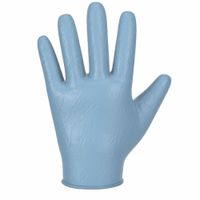Call +(254) 703 030 000 / 751 483 999 / 721 704 777
- Home
- Safety
- Hand Arm Protection
- Safety Gloves
- Disposable Gloves
.....Read More
Frequently Asked Questions
What are the different types of disposable gloves?
Disposable gloves come in various types, each suited for specific tasks and industries:
1. **Latex Gloves**: Made from natural rubber, these gloves offer excellent elasticity, comfort, and fit. They provide good protection against bacteria and viruses, making them ideal for medical and dental use. However, they can cause allergic reactions in some individuals.
2. **Nitrile Gloves**: Composed of synthetic rubber, nitrile gloves are a popular alternative to latex, especially for those with latex allergies. They are highly resistant to punctures, chemicals, and oils, making them suitable for medical, laboratory, and industrial applications.
3. **Vinyl Gloves**: Made from PVC, vinyl gloves are less durable than latex and nitrile but are cost-effective. They are suitable for low-risk tasks and are commonly used in the food industry and for general cleaning purposes.
4. **Polyethylene Gloves**: These are loose-fitting, inexpensive gloves often used for food preparation. They provide minimal protection and are typically used for short-term tasks.
5. **Neoprene Gloves**: Made from synthetic rubber, neoprene gloves offer good chemical resistance and are used in laboratories and for handling hazardous materials. They provide a comfortable fit and are resistant to oils and acids.
6. **Chloroprene Gloves**: Similar to neoprene, chloroprene gloves offer a balance of comfort, elasticity, and chemical resistance. They are used in medical and industrial settings.
Each type of glove has its own advantages and limitations, and the choice depends on the specific requirements of the task, including the level of protection needed, potential allergens, and cost considerations.
How do I choose the right disposable gloves for my needs?
1. **Purpose**: Determine the primary use (medical, food handling, cleaning, etc.). Different tasks require different levels of protection and material types.
2. **Material**:
- **Latex**: Offers good elasticity, fit, and tactile sensitivity. Suitable for medical and industrial use but can cause allergic reactions.
- **Nitrile**: Provides excellent chemical resistance and is a good alternative for those with latex allergies. Ideal for medical, laboratory, and industrial applications.
- **Vinyl**: Cost-effective and suitable for low-risk tasks like food handling. Less durable and offers limited protection against chemicals.
- **Polyethylene**: Lightweight and loose-fitting, suitable for food preparation and handling.
3. **Size and Fit**: Ensure gloves fit snugly without being too tight. Proper fit enhances dexterity and comfort.
4. **Thickness**: Thicker gloves offer more protection but may reduce sensitivity. Choose based on the level of protection needed.
5. **Powdered vs. Powder-Free**: Powdered gloves are easier to put on but may cause contamination. Powder-free gloves are preferred in medical and food settings.
6. **Regulatory Compliance**: Ensure gloves meet industry standards and regulations (e.g., FDA, CE) for your specific application.
7. **Durability and Strength**: Consider the glove’s resistance to punctures, tears, and chemicals, especially for high-risk tasks.
8. **Cost**: Balance cost with quality and protection level. Cheaper gloves may not provide adequate protection for certain tasks.
9. **Environmental Impact**: Consider biodegradable or recyclable options if environmental concerns are a priority.
10. **Allergies**: Be aware of potential allergic reactions, especially with latex gloves, and choose hypoallergenic options if necessary.
Are disposable gloves safe for food handling?
Yes, disposable gloves are generally safe for food handling when used correctly. They provide a barrier to prevent the transfer of bacteria, viruses, and other contaminants from hands to food. However, their effectiveness depends on several factors:
1. **Material**: Gloves made from nitrile, latex, or vinyl are commonly used in food handling. Nitrile and vinyl are preferred for those with latex allergies.
2. **Proper Use**: Gloves must be used properly to be effective. This includes washing hands before putting on gloves, changing gloves frequently, especially after handling raw meat or seafood, and never reusing disposable gloves.
3. **Fit and Comfort**: Gloves should fit well to ensure dexterity and comfort, reducing the risk of tearing and contamination.
4. **Regulations**: Compliance with food safety regulations, such as those from the FDA or local health departments, is crucial. These regulations often specify when and how gloves should be used.
5. **Cross-Contamination**: Gloves can give a false sense of security. It's essential to avoid touching non-food surfaces, like phones or door handles, while wearing gloves to prevent cross-contamination.
6. **Environmental Considerations**: While disposable gloves are convenient, they contribute to environmental waste. Proper disposal and considering biodegradable options can mitigate this impact.
In summary, disposable gloves are safe for food handling if used correctly, following hygiene practices and regulations. They are an effective tool in maintaining food safety, provided they are part of a comprehensive hygiene protocol.
What materials are disposable gloves made from?
Disposable gloves are primarily made from three materials: latex, nitrile, and vinyl.
1. **Latex**: Derived from natural rubber, latex gloves are known for their elasticity, comfort, and fit. They provide excellent tactile sensitivity and are biodegradable. However, they can cause allergic reactions in some individuals due to proteins present in natural rubber.
2. **Nitrile**: Made from synthetic rubber, nitrile gloves are a popular alternative to latex, especially for those with latex allergies. They offer superior puncture resistance and are highly durable. Nitrile gloves are also resistant to a wide range of chemicals, making them suitable for medical, laboratory, and industrial use.
3. **Vinyl**: Composed of polyvinyl chloride (PVC), vinyl gloves are less elastic than latex and nitrile but are cost-effective. They are suitable for tasks with a low risk of exposure to hazardous materials. Vinyl gloves are often used in the food industry and for general cleaning purposes.
Other materials include:
- **Polyethylene**: These gloves are thin, loose-fitting, and primarily used for food handling. They are not suitable for tasks requiring precision or protection from chemicals.
- **Neoprene**: Made from synthetic rubber, neoprene gloves offer good chemical resistance and are used in medical and industrial applications. They provide a comfortable fit and are less likely to cause allergic reactions.
Each material has its advantages and limitations, influencing the choice based on the specific requirements of the task, such as sensitivity, durability, chemical resistance, and potential allergens.
How do I properly dispose of used disposable gloves?
1. **Remove Safely**: Carefully remove the gloves to avoid contact with the contaminated exterior. Pinch the outside of one glove at the wrist, peel it away, and hold it in the gloved hand. Slide fingers under the wrist of the remaining glove, peel it off over the first glove, and discard both.
2. **Containment**: Place the used gloves in a plastic or trash bag to prevent contamination. Seal the bag tightly to ensure no leakage or exposure.
3. **Disposal**: Dispose of the sealed bag in a designated waste bin. If the gloves were used for medical or hazardous materials, follow local regulations for hazardous waste disposal.
4. **Hand Hygiene**: Immediately wash your hands with soap and water for at least 20 seconds or use a hand sanitizer with at least 60% alcohol after disposing of the gloves.
5. **Environmental Considerations**: If possible, use biodegradable gloves to minimize environmental impact. Avoid littering and ensure proper disposal to prevent pollution.
6. **Local Guidelines**: Follow any specific local or institutional guidelines for disposing of personal protective equipment (PPE) to ensure compliance with health and safety regulations.
Can disposable gloves be reused?
No, disposable gloves should not be reused. They are designed for single use to maintain hygiene and prevent cross-contamination. Reusing disposable gloves can compromise their integrity, leading to tears or punctures, and can spread contaminants or pathogens. Always dispose of them properly after use and replace with a new pair when needed.
What is the difference between medical-grade and general-purpose disposable gloves?
Medical-grade disposable gloves are designed to meet stringent standards for safety and quality, ensuring they are suitable for use in healthcare settings. They are tested for durability, resistance to chemicals, and protection against pathogens. These gloves must comply with regulations set by organizations like the FDA in the U.S., which require them to pass specific tests for tensile strength, leak resistance, and biocompatibility. Medical-grade gloves are often used in surgeries, examinations, and other medical procedures where there is a risk of exposure to bloodborne pathogens and other contaminants.
General-purpose disposable gloves, on the other hand, are intended for non-medical use. They are commonly used in industries such as food service, janitorial work, and general cleaning tasks. While they provide a barrier against dirt and some chemicals, they do not undergo the rigorous testing required for medical-grade gloves. As a result, they may not offer the same level of protection against pathogens and are not recommended for use in healthcare settings.
The materials used for both types of gloves can include latex, nitrile, and vinyl, but the quality and specifications may differ. Medical-grade gloves are often more expensive due to their higher quality and the testing they undergo. In summary, the primary difference lies in the level of protection and the regulatory standards they meet, with medical-grade gloves being suitable for healthcare environments and general-purpose gloves being used for everyday tasks.



